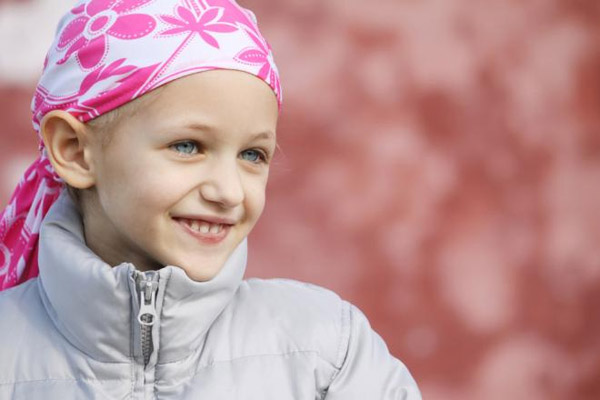 More and more people are surviving their cancer. Unfortunately, sometimes survival can come with pain. Although many people won’t feel any pain after their cancer treatment, some may have chronic, bothersome pain. The niggling pain reminds them of their cancer every time they perform an everyday task, like writing a grocery list. But in a very few cases, pain can be so severe that keeps people from enjoying the life they fought so hard to preserve. Fortunately, cancer survivors in pain can find relief. In a review paper published this month in the “Journal of Clinical Oncology,” Esmé Finlay, MD, and her colleagues describe ways to combat pain after cancer treatment.
More and more people are surviving their cancer. Unfortunately, sometimes survival can come with pain. Although many people won’t feel any pain after their cancer treatment, some may have chronic, bothersome pain. The niggling pain reminds them of their cancer every time they perform an everyday task, like writing a grocery list. But in a very few cases, pain can be so severe that keeps people from enjoying the life they fought so hard to preserve. Fortunately, cancer survivors in pain can find relief. In a review paper published this month in the “Journal of Clinical Oncology,” Esmé Finlay, MD, and her colleagues describe ways to combat pain after cancer treatment.
“There are lots of ways to treat post-cancer pain,” says Dr. Finlay, who is a University of New Mexico Cancer Center physician. “The intent of this paper is to educate all the different types of providers who are seeing patients after their cancer is cured.” Dr. Finlay hopes that raising awareness that cancer survivors may have chronic pain after their treatment will guide more people to seek help. She also hopes that greater awareness will spur oncologists, survivorship teams, and primary care physicians to work better together if a cancer survivor needs different kinds of help to manage pain. Dr. Finlay says, “We need to help cancer survivors be functional, active participants in their lives post-treatment.”
Cancer survivors can have pain from surgery, especially if their surgeon had to cut nerves to remove their tumor. For example, women who undergo a lumpectomy or mastectomy may feel a shooting or burning pain in their chest wall. Many head or neck cancer patients, too, may have pain after their surgeries if they needed neck surgery to remove lymph nodes. The pain may persist even years after surgery.
Cancer survivors might also have pain from their chemotherapy drugs. “Some chemotherapies are toxic to our nerves,” says Dr. Finlay. “Over time we get cumulative damage to the nerves in our fingers and toes. People can have chronic burning, numbness or discomfort.”
Aside from nerve damage, cancer survivors may also have lymphedema, the painful swelling that results when fluid builds up in tissues where it shouldn’t. Lymph drainage changes when the surgeon removes lymph nodes along with the tumor; lymph nodes may not drain like they used to. And, cancer survivors might also have pain or trouble moving parts of the body that were cut to remove a tumor.
The review paper describes many different methods to combat pain. Dr. Finlay uses the methods in her practice at the UNM Cancer Center. “In my practice, I often need to use very strong pain medicines to get people through their treatment,” says Dr. Finlay. “Sometimes that means [using] opioid pain medicines. But we don’t want people to be on strong opioids for a long time if they don’t need them.” Opioid drugs like morphine or oxycodone can be addictive and have side effects and risks with long-term use. “Chronic pain specialists really try to use non-opioid strategies,” she says, “whether it’s medicine or physical or psychological interventions, like acupuncture, physical therapy, or cognitive behavioral therapy, to manage pain.”
Dr. Finlay uses a non-addictive group of medicines that ease nerve pain. She also prescribes physical therapy to ease pain and lymphedema after surgery and radiation treatment. The physical therapist Dr. Finlay and her colleagues at UNM Cancer Center refer to specializes in physical therapy for cancer survivors and in lymphedema therapy. Dr. Finlay also has strong ties with the UNM Center for Life and refers her patients there for massage and acupuncture when needed.
Like many oncologists, Dr. Finlay follows her patients for at least five years after cancer treatment. For most patients, pain subsides within the first two years. For some, though, the pain persists and can be very severe. “With chronic pain and symptoms, it’s important that people transition to a primary care doctor who understands those pain issues,” she says. “If their pain is really complex, they need to use a multidisciplinary pain clinic.” UNM has a multidisciplinary pain clinic with physical therapists, a pharmacist, psychologists and many physicians trained in pain management.
“Pain makes people less functional,” says Dr. Finlay. “I think the key thing people need to know is to ask for help if they have chronic pain after cancer. They need to know that there are lots of different ways to address pain. Just because the cancer is gone doesn’t mean you’re going to be 100 percent the way you were before you were treated.” Survivors shouldn’t suffer in silence. The study done by University of New Mexico Cancer Center.